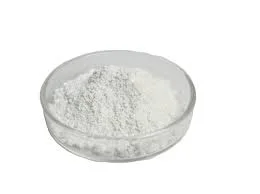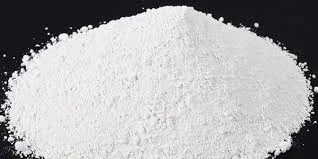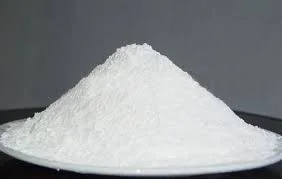Titanium dioxide (TiO2) is a widely used compound in various industries, but its rutile form stands out due to its unique properties and versatility. In the coatings industry, rutile TiO2plays a crucial role in enhancing the performance and aesthetics of coatings. This blog will delve into the applications and benefits of rutile TiO2 in the coatings sector, exploring why it is a preferred choice for manufacturers and consumers alike.
Understanding Rutile TiO2
Rutile is one of the three primary mineral forms of titanium dioxide, the others being anatase and brookite. Rutile TiO2 is characterized by its high refractive index, excellent opacity, and superior durability. These properties make it an ideal pigment for coatings, providing not only color but also protection against environmental factors.

The Chemical Structure of Rutile TiO2
Rutile has a tetragonal crystal structure, which contributes to its high density and stability. The chemical formula, TiO2, indicates that each titanium atom is bonded to two oxygen atoms. This structure allows rutile to scatter light effectively, making it an excellent white pigment. Its ability to absorb ultraviolet (UV) light also protects underlying materials from degradation.
Applications of Rutile TiO2 in the Coatings Industry
Rutile TiO2 is utilized in various types of coatings, including architectural, industrial, automotive, and marine coatings. Its applications can be categorized as follows:
1. Architectural Coatings
Architectural coatings are used on buildings and structures to provide aesthetic appeal and protection. Rutile TiO2 is a key ingredient in these coatings due to its excellent hiding power and color retention. It enhances the brightness and whiteness of paints, making them more visually appealing. Additionally, its UV resistance helps prevent fading, ensuring that buildings maintain their appearance over time.
2. Industrial Coatings
In industrial settings, coatings are applied to machinery, equipment, and surfaces to protect against corrosion and wear. Rutile TiO2 contributes to the durability of these coatings, providing a tough barrier against environmental factors. Its high opacity allows for thinner applications, reducing material costs while maintaining performance.
3. Automotive Coatings
The automotive industry relies heavily on high-quality coatings for both aesthetic and protective purposes. Rutile TiO2 is used in automotive paints to achieve a glossy finish and vibrant colors. Its UV resistance helps protect vehicles from sun damage, while its durability ensures that the paint withstands harsh weather conditions and road debris.
4. Marine Coatings
Marine coatings are specifically designed to protect vessels from the harsh marine environment. Rutile TiO2 is essential in these coatings due to its resistance to saltwater and UV radiation. It helps prevent the growth of algae and barnacles on boat hulls, ensuring that vessels remain efficient and visually appealing.

Benefits of Rutile TiO2 in Coatings
The incorporation of rutile TiO2 in coatings offers numerous benefits that enhance both performance and sustainability. Here are some of the key advantages:
1. Superior Opacity and Hiding Power
Rutile TiO2 is renowned for its exceptional hiding power, meaning it can effectively cover underlying surfaces with minimal application. This property allows manufacturers to use less pigment while achieving the desired color and opacity, resulting in cost savings and reduced environmental impact.
2. Enhanced Durability
Coatings containing rutile TiO2 exhibit improved durability and resistance to wear and tear. This longevity is crucial in applications where coatings are exposed to harsh conditions, such as industrial and marine environments. The enhanced durability translates to lower maintenance costs and longer intervals between reapplications.
3. UV Protection
One of the standout features of rutile TiO2 is its ability to absorb UV radiation. This property protects both the coating and the substrate beneath it from UV-induced degradation. By preventing fading and discoloration, rutile TiO2 helps maintain the aesthetic appeal of coated surfaces over time.
4. Environmental Benefits
As sustainability becomes increasingly important in the coatings industry, rutile TiO2 offers several environmental advantages. Its high hiding power allows for lower pigment usage, reducing the overall volume of materials needed. Additionally, many manufacturers are exploring eco-friendly production methods for TiO2, further minimizing the environmental footprint of coatings.
5. Versatility in Formulations
Rutile TiO2 can be easily incorporated into various coating formulations, including water-based, solvent-based, and powder coatings. This versatility allows manufacturers to tailor their products to meet specific performance requirements and customer preferences.
Challenges and Considerations
While rutile TiO2 offers numerous benefits, there are challenges and considerations that manufacturers must address:
1. Cost
Rutile TiO2 can be more expensive than alternative pigments, particularly in regions where raw materials are scarce. Manufacturers must balance the cost of TiO2 with the performance benefits it provides to ensure competitive pricing.
2. Supply Chain Issues
The global supply chain for rutile TiO2 can be affected by geopolitical factors, mining regulations, and environmental concerns. Manufacturers must stay informed about market trends and potential disruptions to ensure a steady supply of this essential pigment.
3. Regulatory Compliance
As environmental regulations become stricter, coatings manufacturers must ensure that their formulations comply with local and international standards. This may involve sourcing TiO2 from suppliers who adhere to sustainable practices and meet regulatory requirements.

Conclusion
Rutile TiO2 is a vital component in the coatings industry, offering a unique combination of properties that enhance both performance and aesthetics. Its applications span across architectural, industrial, automotive, and marine coatings, making it an indispensable ingredient for manufacturers. With its superior opacity, durability, UV protection, and environmental benefits, rutile TiO2 continues to be a preferred choice in the coatings sector. As the industry evolves, the future of rutile TiO2 looks promising, with opportunities for innovation and sustainability paving the way for continued growth and development.
Wuxi CHTI New Material Co., Ltd. was established in 2015, the main product is titanium dioxide. It is one of the CHTI sales companies and has established long-term and stable cooperative relations with other domestic factories. The main products are high-grade rutile, anatase, and titanium white enamel, and the extended products are vanadium and ferrous sulfate. Widely used in coatings, plastics, inks, paper, brake pads, enamel, welding materials, steel, metallurgy, sewage treatment, new energy batteries and other fields.
Welcome to inquiry if you need to know more about Rutile TiO2 details or order wholesale.


